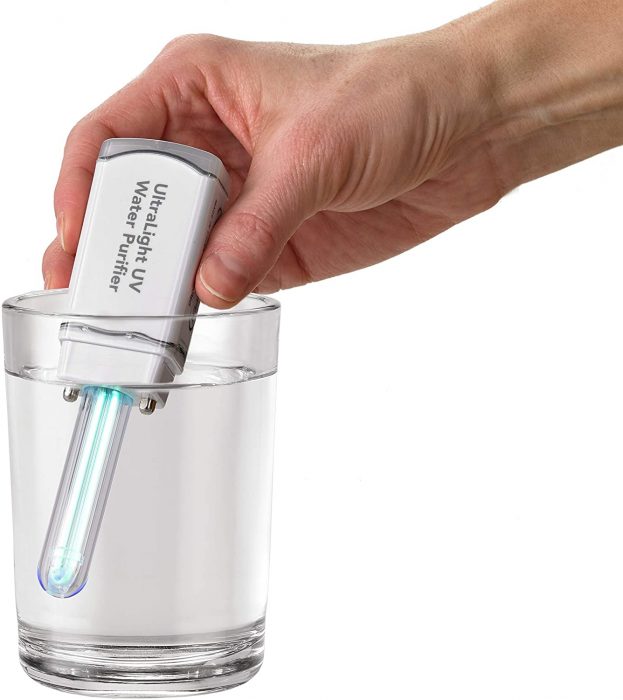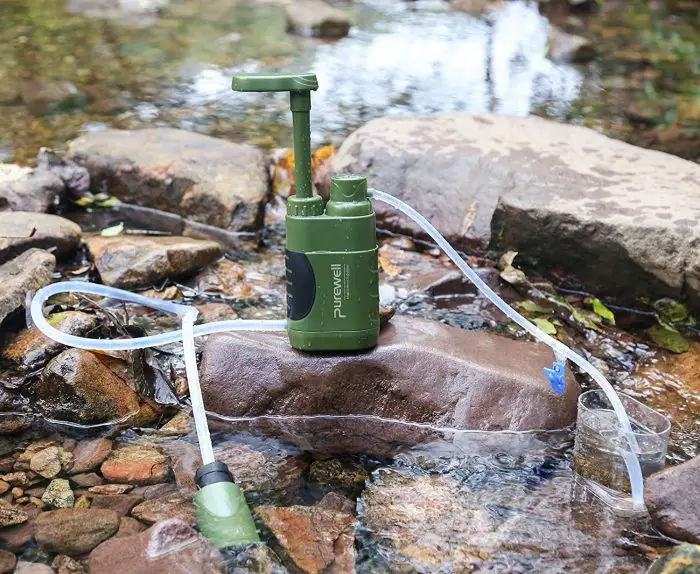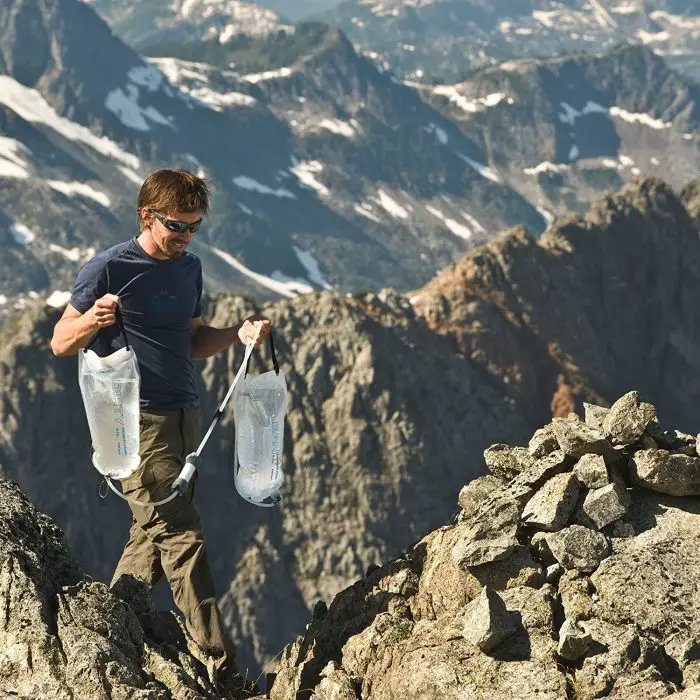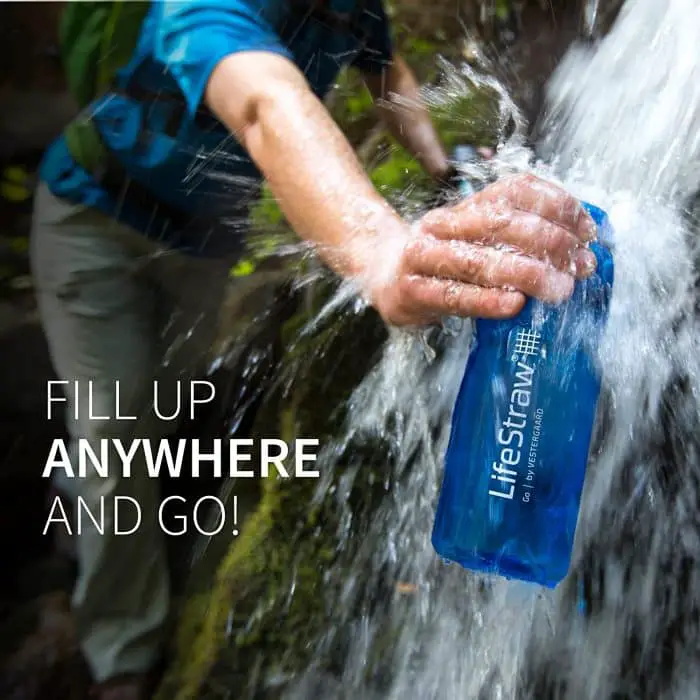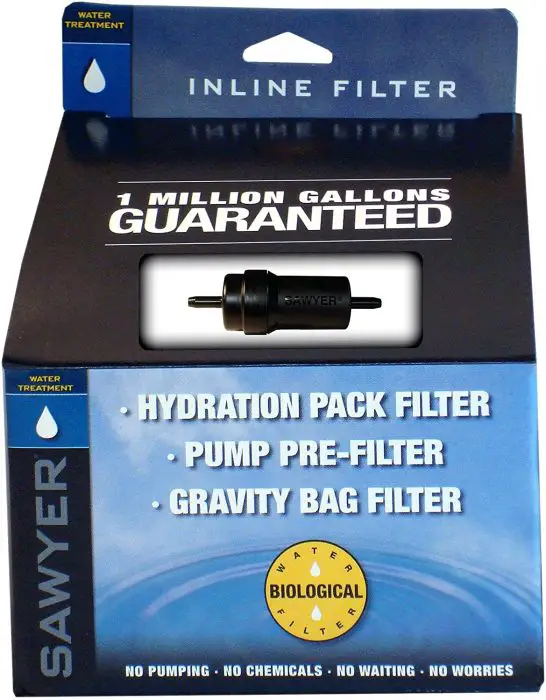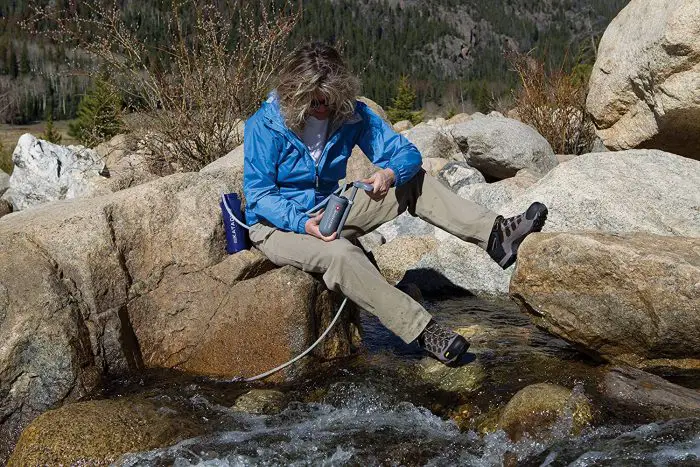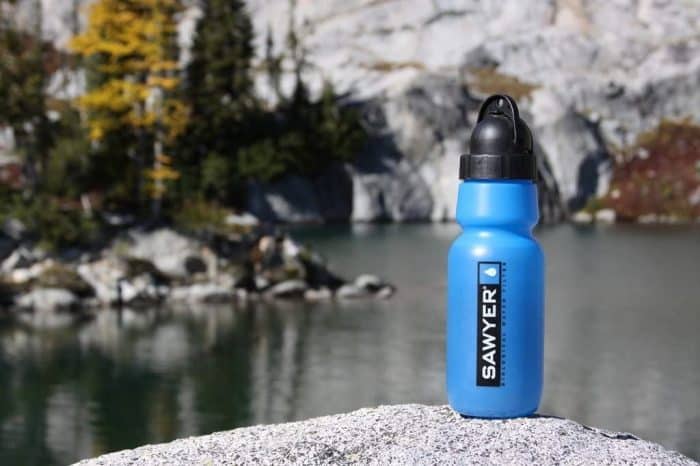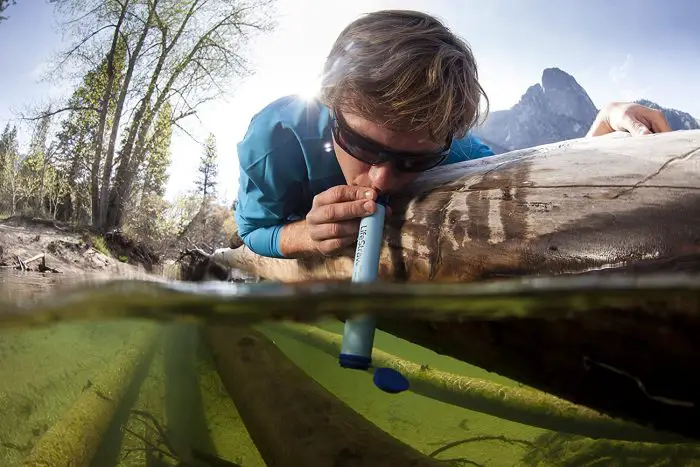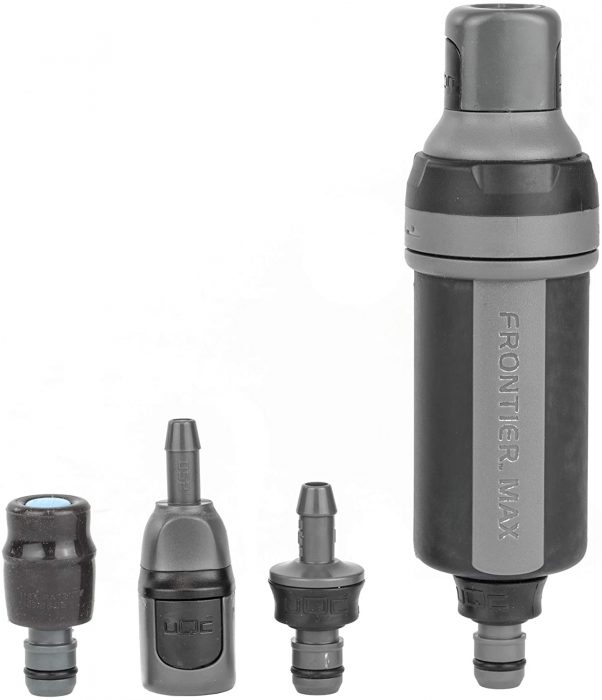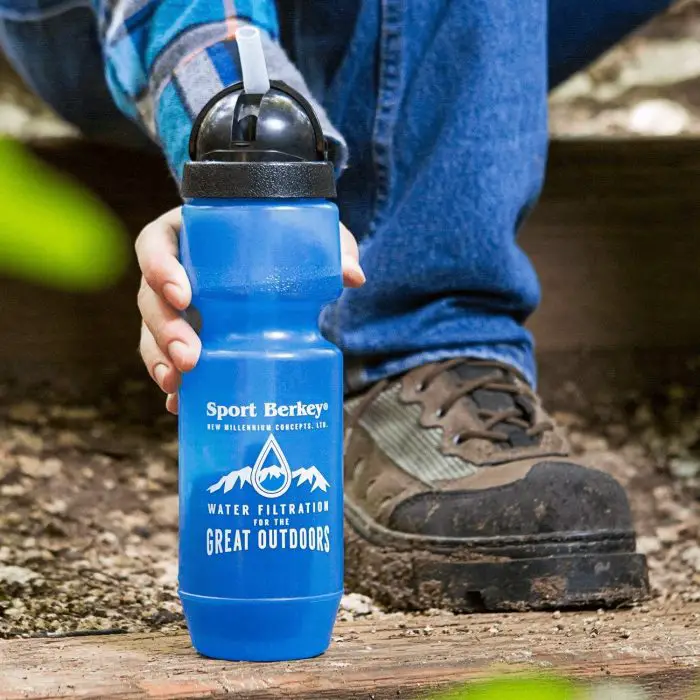Water is vital for survival and emergency preparedness. Whether you are trapped at home or at a campsite, you need water to survive while waiting for help to arrive.
The good news for us is that ⅔ of the world is made of water. At home, water supply is available from our faucets. If you are on a trail hike or camping trip, you are most likely to find a water source nearby.
However, not all water sources are considered safe for drinking.
The Law of Three states that:
- Survival is only possible for three minutes without air.
- Survival is only possible for three hours without warmth.
- Survival is only possible for only three days without replenishing water in your body.
- Survival is only possible for three weeks without food.
Risks of Untreated Water
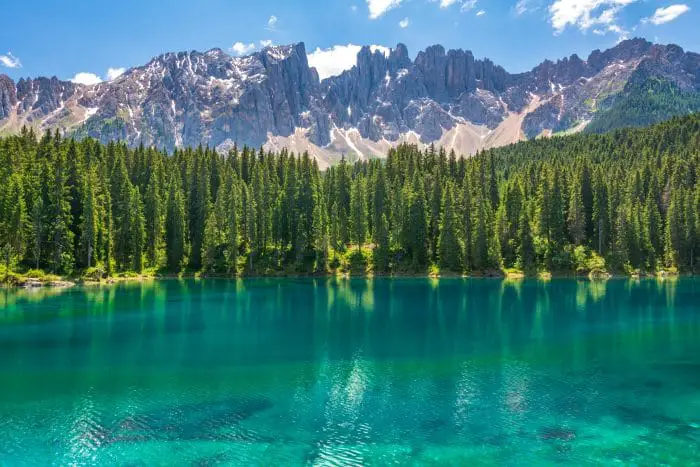
When we look at the Law of Three, we can see that water is listed. This means that Water is essential to your survival. We’ve covered posts in finding water, now lets figure out how we can make it drinkable.
Let’s first figure out what microorganisms may be encountered in water and what size they are so we can determine the correct Water Filter Systems for Preppers.
Lakes, streams, and rivers used to be safe sources of drinking water. But because of toxic wastes dumped into these bodies of water, it is unfortunate that you can’t directly drink from them now.
A few drops of untreated water can contain billions of harmful chemicals, sediments, and microorganisms. According to the World Health Organization (WHO), “Contaminated water can transmit diseases such as diarrhea, cholera, dysentery, typhoid, and polio.”
Drinking untreated water will make you sick instead of helping you survive.
Water Treatment Methods
It is very important to treat water before drinking it. Here are several ways to clean or purify water to be safe for drinking:
This method forces water into very small filters, thus removing parasites and other contaminants. Filters can be a bit more costly than other methods, but they come very handy, easy to use, and allow you to drink the water immediately.
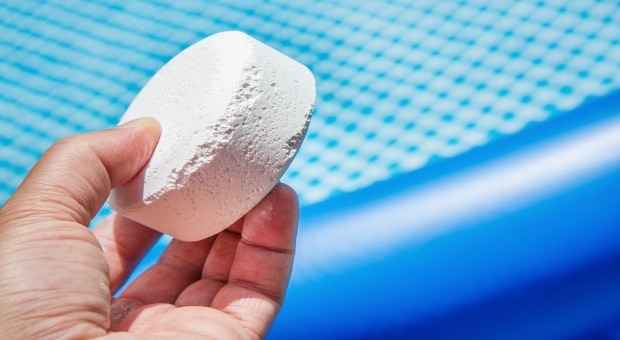
You should also carry water treatment drops or tablets with you to provide redundancy in the even of equipment loss or failure of your water filter systems.
Halogens – usually iodine and chlorine – are used to chemically treat contaminated water.
If you choose to use this method, be sure to carefully follow the instructions. Several factors need to be considered for this process to work such as water clarity, temperature, halogen concentration, and treatment duration.
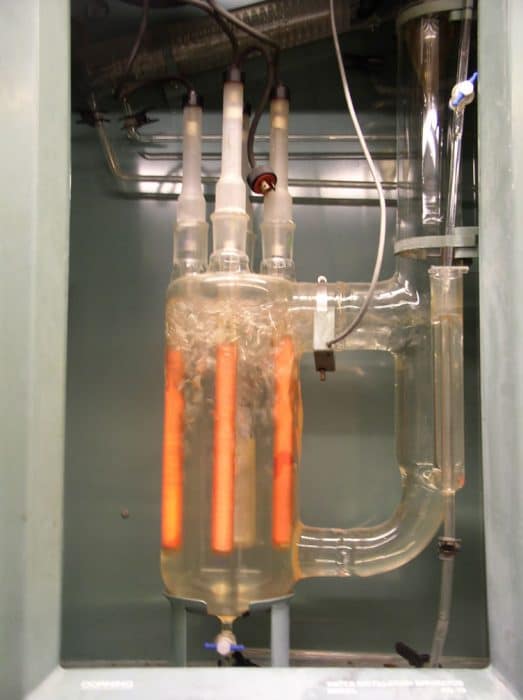
Using a distiller is one of the most effective ways to purify water. However, distillation is not efficient in emergency situations as it requires big equipment that would be impossible to carry around.
It is also too complicated and difficult to build an effective DIY distiller.
UV water purifiers kill living microorganisms, such as bacteria and parasites. However, they cannot remove other contaminants such as chlorine, heavy metals, salt, or man-made toxins.
This method also only works if the water is clear. The presence of other particles will block the UV rays from reaching and killing the microorganisms.
Aside from that, a UV purifier is powered by electricity. Thus, it is not an ideal backpacking water filter where little to no electricity is available.
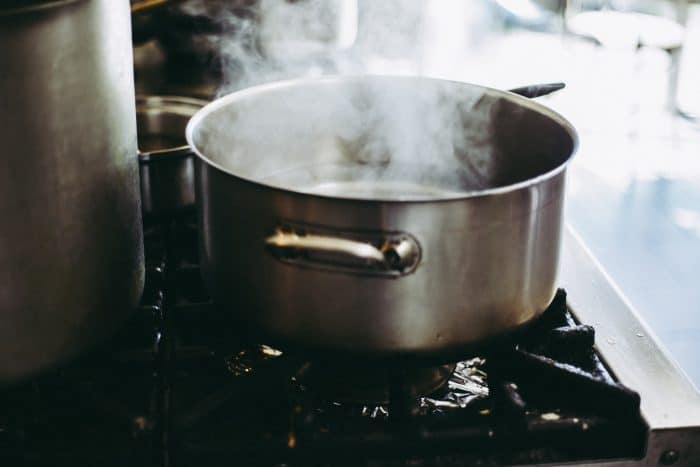
The least costly method of purifying water is boiling. This method works well if you are at home and have a stove and pot or kettle readily available. But if you are outside and have none of the equipment at hand, it really isn’t an option.
It is effective but requires equipment and time. You need 5 to 10 minutes to bring the water to a boiling point, and a few more minutes to wait for the water to cool down before you can drink it.
How Filters Work
Water filters can get you clean, drinkable water with minimal effort, i.e. squeezing or pumping water through the filter. They are also effective and convenient to bring along.
Filters work best in emergency and survival situations where there will be very little water to drink. Water filters will save your life while you’re waiting for rescue or until you reach the next stop.
Water weighs about 8lbs per gallon. Each person requires about 1 gallon of water per day for drinking an hygiene uses. This makes it hard to carry enough water to survive, and this is what makes Water Filter Systems for Preppers so important!
Types of Water Filters
There are multiple types of water filters, each with their own unique mechanisms. Here’s a guide on how each type works in terms of filtering and drawing water from the source:
1. Pumps
Raw water is “pushed” via a pump mechanism through the filter. This type of water filter usually has the fastest flow rate compared to the other water filter types.
A good pump type filtration system can usually put out a liter or two of potable water per minute. You get more potable water in less time which can come in handy in some emergency situations.
A .2 micron glass fiber filter pushes out drinkable water quickly with little to no effort. You also get a durable 11-oz microfilter which attaches to your hydration pack of water bottles and 1/4″ drink tubes.
2. Straws
Just as the name says, straw types are basically straws that can filter water while you take a sip.
A straw filter offers several advantages such as being lightweight and extremely portable. You can carry the straw in your pocket or your backpack and whip it out as needed. It also allows you to drink straight from the source or collect raw water in a container and use the straw on it.
On the other hand, you need to be right beside the water source if you don’t have a container you can use to collect the raw water. Older people will most likely find it more difficult to use a straw type water filter as they will have to be on all fours to get a good drink.
3. Bottles
These all-in-one filters are very convenient and handy. You can use them for collecting or filtering water, depending on what the situation dictates.
Like all the other water filter devices in this list, built-in water filter systems are designed to be lightweight and easily maintainable. Some have a coffee press mechanism while others have a bite valve you can drink from. What reaches your mouth is safe, clean, and tasteless water.
4. Ceramic
Ceramic water filters are among the most popular portable water filtration systems for a good reason. Ceramic has been mainly used to filter out contaminants since ancient times. This material is very good at producing very clean, drinkable water from lakes, rivers, and ponds. Though they may appear to be solid, ceramic is actually porous and has many microscopic openings that can weed out microbes and harmful contaminants.
With all that good, why aren’t all water filters made of ceramic? One of the main disadvantages of ceramic is that it’s heavier and more fragile. You can’t just leave them along with your other things or they may break prematurely.
If you don’t mind the extra weight, ceramic filters are among the best when filtering out bacteria and other contaminants from outdoor water sources. Ceramics last for a lifetime and they bring danger down to almost zero when you use them.
5. Gravity Fed
There’s no effort needed when you opt-in for a gravity water filter. Basically, raw water passes through the filter and comes out clean and drinkable.
When water is put in the container, it passes the filter as it naturally gravitates downward. The hose has hollow membranes that filter the water, making it safe to drink. Gravity water filters have an edge over pressure-based filters as they are more effective in producing potable water.
The only disadvantage is that it takes a long time for the filtering process to be completed. It’s not recommended if you’re on the go and need a drink ASAP.
Guide to Choosing a Water Filter
1. Portability
The ultimate prepper water filtration system should be portable enough that you can bring it everywhere you go, regardless of your clothes and your bag.
Today’s portable water filters are small and affordable. There’s absolutely no reason why you shouldn’t have one in your hiking or emergency bag.
All the essential survival tools should be able to fit inside your bug out bag. This bag should always be ready in case of emergency situations.
Some water filters are so small that they can easily fit in your pocket. Some just weigh as little as 2 ounces. A good portable filter will be anywhere between 6 to 13 inches.
2. Effectiveness
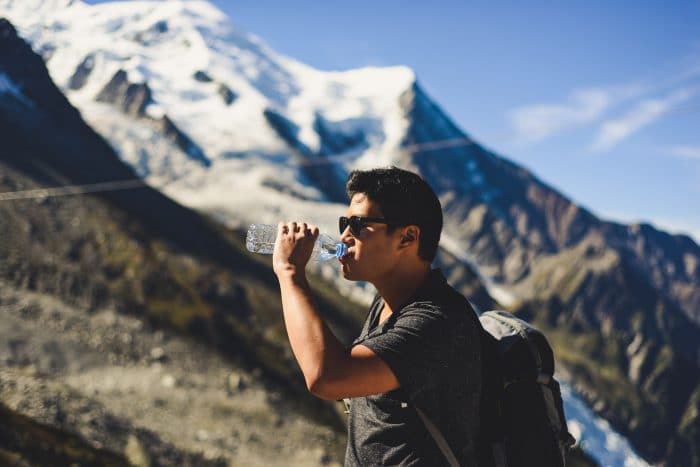
Just how fine are the sieves that are used to filter the water? It all boils down to the micron level.
The general rule is that a smaller micron level is better at filtering out contaminants than filters that have bigger micron levels. There are some survival water filters that are advertised to have .1 or .2 microns, while others say they can eliminate 99.9% viruses and microorganisms.
3. Micron Rating
What is a Micron Rating?
Essentially, it measures the size of openings found in a filter. The smallest micron sizes are at .1 microns, which can stop bacteria from passing through (bacteria is at .2 micron).
A filter that has a smaller micron rating should also be able to prevent cysts and viruses from passing through. Pore size helps if you plan on drawing water to drink from springs, rivers, and deep wells.
Common microorganisms and the filter size needed:
- Protozoa (Giardia, Cryptosporidium)
- General Size: 5 microns or larger
- Filter Type: Water filter
- Particle Size Rating: 1.0–4.0 microns
- Bacteria (Cholera, E. coli, Salmonella)
- General Size: 0.2–0.5 microns
- Filter Type: Microfilter
- Particle Size Rating: 0.2–1.0 microns
- Viruses (Hepatitis A, rotavirus, Norwalk virus)
- General Size: 0.004 microns
- Filter Type: Water purifier
- Particle Size Rating: to 0.004 microns
Data from https://www.princeton.edu/~oa/manual/water.shtml
4. Output Speed
How much water can a filter process at one time? A high flow rate makes it easier and quicker to collect potable water from a source. In general, larger filters will have a higher speed of water output as compared to the smaller water filter variants.
Pump type water filters can put out a rate at around 1 to 2 liters of potable water per minute. Straw-type water filters have smaller filters, but they are more portable and it can be used to drink water directly from the source. The “sip and drink” mechanism is only possible because of the filter’s reduced surface area.
5. Convenience
How easy is it to draw and drink water using the filter? Each type has its own pros and cons.
For example, the straw type requires you to submerge the device and suck the water straight from the source, while the pump type requires a bit of exertion to use.
6. Taste Quality

Great-tasting water is free of chemicals and microorganisms. The moment we taste something funny in the water, we immediately stop because it is our natural instinct.
Potable water should be at best neutral. Water filters will sometimes have features such as activated carbon that effectively traps the “funny taste” of contaminated water.
7. EPA Standards
Make sure to check out if a water filtration system passes EPA standards. The Environmental Protection Agency has set a standard that determines whether water is safe for public consumption or not. In short, if a water filter passes this, then it should be safe for you to use.
14 Best Prepper Water Filter Products
1. Sawyer SP121 Just Drink Inline Water Filter (0.1 Micron)
- Biological Filtration: Sawyer Water Filters offer the highest level of biological filtration
- Removal rates: (7 Log Bacteria 99.99999-percent, 6 Log Protozoa & Cysts 99.9999-percent)
- 1 Million Gallons Guaranteed
- 1 Micron absolute hollow fiber membrane inline filter
- Use with a pump to prefilter, on a faucet adapter or inline in a hydration pack
2. Katadyn Pocket Water Microfilter (0.2 microns)
- Capacity: 13,000 gallons / 50,000 liters
- Dimensions: 24 by 6 centimeters / 10 by 2.4 inches
- Output: 1 quart/liter per minute
- Technology: 0.2 micron ceramic depth filter (cleanable)
- Weight: 550 grams / 20 ounces
- 20 year warranty
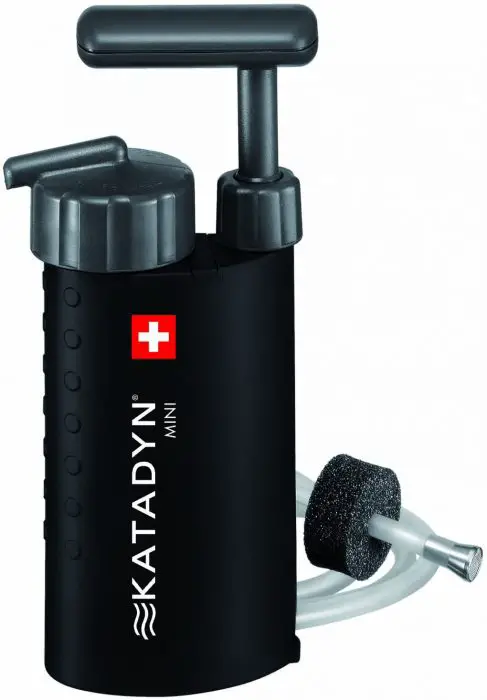 3. Katadyn Mini Microfilter (0.2 microns)
3. Katadyn Mini Microfilter (0.2 microns)
- Exclusive silver impregnated ceramic filter removes bacteria and protozoa
- 2 micron ceramic depth cleanable filter
- Equipped with Prefilter and carry bag
- Materials: Silver-impregnated ceramic filter, plastic
- Small enough to fit in your pocket, the Katadyn Mini Microfilter is perfect for light solo use during travel and day-hiking
- Katadyn’s lightest, most compact filter (about 10oz whey dry
4. Katadyn Vario Multi Flow Water Microfilter (0.3 microns)
- Output: Up to 2 quarts (2 liters) per minute
- Cartridge Capacity: Up to 500 gallons (1875 liters)
- Weight: 15 ounces
- Height: 6.5 inches
- Hose Length: 36 inches
- Includes prefilter, cleaning pad, and deluxe carry bag
- Attach directly to Nalgene bottles
5. Katadyn Hiker Pro Microfilter Water Filter (0.3 microns)
- Removable filter protector extends cartridge life
- Quick connect fittings make installation and removal of input and output hoses easy
- Connects directly to hydration packs with 1/4″ drink tubes
- 129 square inches of pleated 0.3 micron glass fiber media with activated carbon core
- 1 Quart (1 Liter) per minute, 300 gallon (1150 Liters) cartridge capacity
6. HydroBlu Versa Flow Inline Water Filter
- 1 micron hollow fiber membrane
- Filter can be used on a bucket filter, water bottle, inline water filter, gravity system, or as a straw
- Lightweight, weighs only 2 ounces and the (2) collapsible canteens weigh 1 ounce each
7. Sawyer Mini
- Attaches to included drinking pouch, standard disposable water bottles, hydration packs, or use the straw to drink directly from your water source
- Removes 7 log (99.99999%) of all bacteria and 6 log (99.9999%) of all protozoa
- Weighs only 2 ounces
- Filters up to 100,000 gallons (30 times more than comparable filters)
8. Sawyer Personal Water Bottle Filter (0.1 microns)
- 1 Micron absolute hollow fiber membrane inline filter
- Removes 99.99999% bacteria and 99.9999% Protozoa
- Polypropylene and polyethylene material is easily field maintainable
- No residual chemical tastes
- Comes with manufacturer’s 1 million gallon guarantee
9. LifeStraw Personal Water Filter (0.2 microns)
- Removes a minimum of 99.9999% of waterborne bacteria per manufacturer.(>LOG 6 reduction)
- LifeStraw® offers easy access to clean and safe drinking water away from home!
- Filters up to 1000L of contaminated water per the manufacturer.
- Removes a minimum of 99.9% of waterborne protozoan parasites per manufacturer.
- Reduces water turbidity by filtering particles of approximately 0.2 microns.
10. Pure Water Straw-Advanced (2 microns, NOT .2 or .02 microns, but 2 microns)
- Up to 25-gallon filter life
- Now with BIOSAFE, removes up to 99.99% of bacteria, virus, contaminants and pollutants found in drinking water
- Non-toxic BPA free materials.
- Tested by Independent laboratories using EPA /ANSI protocols and NSF Standards 42 and 53.
- ideal for everyday use; put in your pocket, purse, briefcase or car glove compartment.
- Advanced filter removes virus and bacteria to six logs (99.9999%).
- Waterproof carrying case.
- Use in conjunction with treatment drops or tablets for best results
11. Aquamira Frontier Emergency Water Filter System (3 microns, NOT .3 or .03 microns, but 3 microns)
- Emergency water filter system ideal for hiking, traveling, and emergencies
- Particle blend removes more than 99.9 percent of cryptosporidium and Giardia
- Compact body slips easily into a daypack, shirt pocket, or travel bag
- Single unit filters up to 30 gallons of water; improves tastes and eliminates odors
- Weighs less than 1 ounce;
- Use in conjunction with treatment drops or tablets for best results
12. Berkey Sport Bottle
- Eliminates or Reduces up to 99.9% of: Unpleasant taste and odors, cloudiness, silt, sediment and chlorine.
- Toxic chemicals: Trihalomethanes, VOCs, detergents, pesticides, etc
- Harmful microscopic pathogens: Cryptosporidium, Giardia, E-coli >99.99999% and other pathogenic bacteria
- Heavy metals: Aluminum, Cadmium, Chromium, Copper, Lead, and Mercury
4 Best Practices in Using An Emergency Water Filter
1. Choose your water source carefully
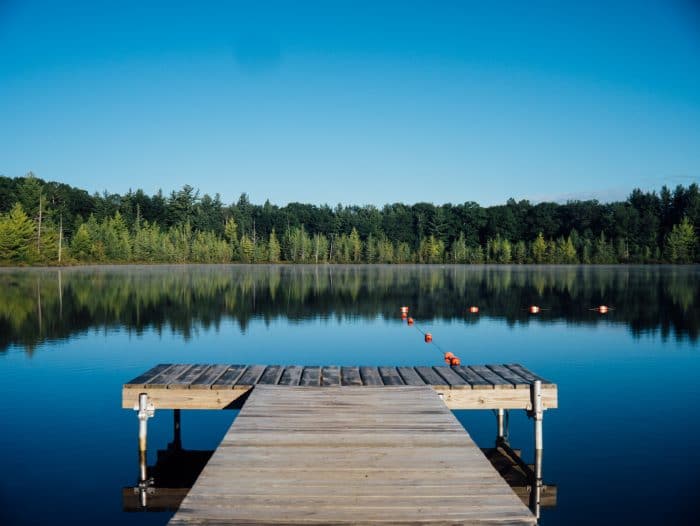
Unless you have no other choice, choose the cleanest and most transparent water source near you. Avoid water with mud or visible contaminants.
Doing so will help preserve the effectiveness of your filter. Even the best water filter will eventually clog if constantly used on extremely unclean water.
And if you are camping, make sure to place your shelter 250 to 500 feet away from your water source. Avoid washing dishes and clothes or using the bathroom near where you get your water.
2. Avoid cross-contamination
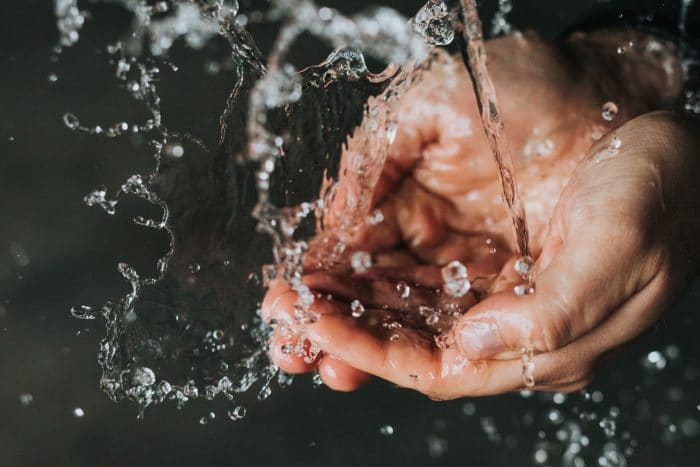
Maintain good hygiene when treating water. Start by washing your hands before handling your water filter to avoid contamination.
Remember also to separate clean water containers from the dirty ones. And don’t filter water into a container that was also used to store raw water.
3. Read the user manual
After buying your water filter, take time to read the user manual. It only takes a few minutes and might help spare you from sickness and even save your life in the future.
Learn how to properly store and maintain your filter. Using it incorrectly may lead to cross-contamination or damages.
Ceramic filters, for example, can crack once frozen. Other filters require to be flushed with clean water right after every use, while some need flushing less frequently. There are also filters that apart from being flushed, also need scrubbing so clogging can be prevented.
Bottom line is, you must know how your filter works and how to clean it properly to ensure your safety.
4. Have a backup
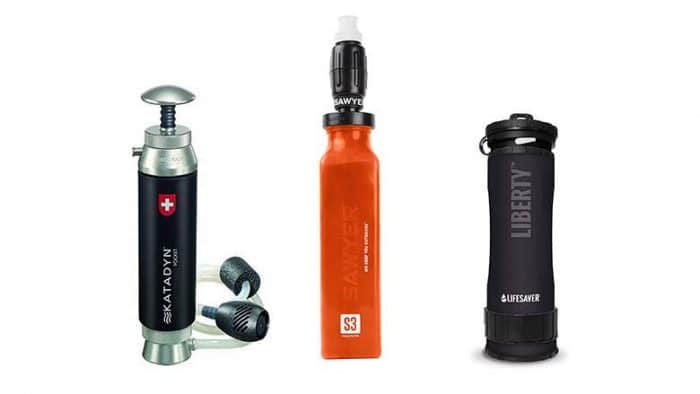
If you can, have a backup filter with you. Especially if you go camping or hiking, you never know what might happen out there.
Your filter may clog or break, or someone from your group might need one. If you plan to be out for a long time, bringing a spare water filter with you is recommended.
Final Thoughts
A person can survive for three weeks without food, but only three days without water. Having access to potable water should always be part of your emergency preparedness plan.
If you are at home, make sure to stock on drinking water in case of calamities and lockdowns. But if you plan to go backpacking, bringing a water filter with you is a must. Drinking untreated water has been proven to cause several illnesses and even deaths.
There are multiple types and brands of water filters in the market. Refer to the buying guide and list of suggested products above to help you choose what to buy.
Buying a portable water filter can be costly at first. But it is better to invest on something that preserves your health, rather than spend money on medical treatments because you got sick.


